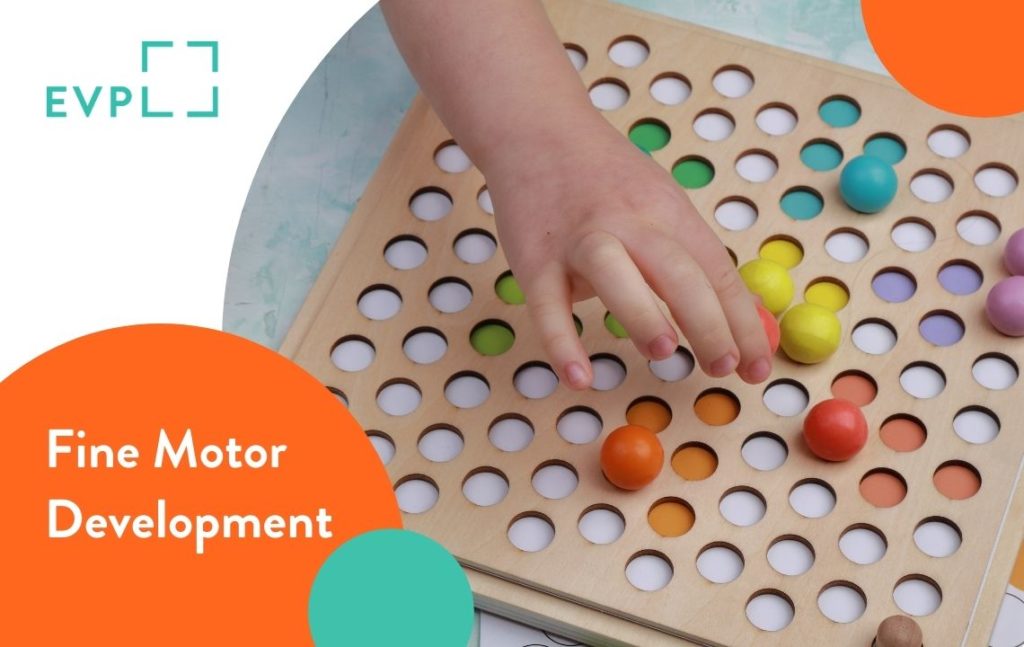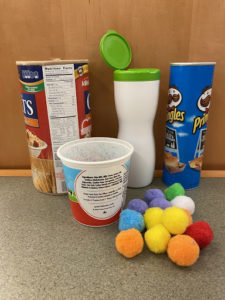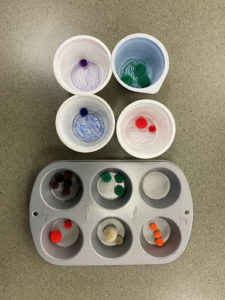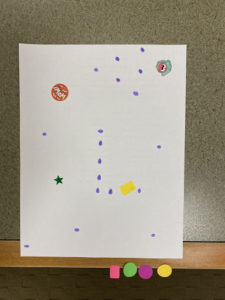Check out these activities to strengthen fine motor skills
Of the five early literacy practices (reading, writing, singing, talking, and playing), writing may be the one you find most difficult to naturally find activities for your child. While your child may not be ready to write, there is a lot of hand and finger strengthening that needs to happen before they’re able to hold and control a pencil enough to write letters. Here are some simple ideas for practicing at home that can be modified for ages 18 months to 5 years. As always, these activities should only be done with adult supervision.

Pom-poms
 You may have noticed your child really loves putting things inside containers and dumping them out. This is actually something that helps them practice hand-eye coordination and strengthens their fingers and hands! Use large pom-poms (1.5-2 inches), and practice putting them into clean, recycled items from your house.
You may have noticed your child really loves putting things inside containers and dumping them out. This is actually something that helps them practice hand-eye coordination and strengthens their fingers and hands! Use large pom-poms (1.5-2 inches), and practice putting them into clean, recycled items from your house.
For younger children, use containers with larger holes like an oatmeal tub. Use containers with smaller openings for older children. We love using puff containers at our house, and they have the added bonus of a top that can shut to keep your pom-poms together when you’re finished.
 As your child gets older you can use smaller pom-poms, and practice putting them into containers with smaller openings.
As your child gets older you can use smaller pom-poms, and practice putting them into containers with smaller openings.
This is also a natural opportunity for talking about and sorting colors. For younger children, say the color of each pom-pom as they put it inside their container. For older children, help them sort the pom-poms by color into the different holes of a muffin tin or recycled yogurt containers. You can also add colors to the bottom of the yogurt containers if it will help your child visualize the sorting process.
Stickers
 Putting stickers on paper is another simple way to strengthen fingers! 1-2 year-olds will likely need an adult to help them get the sticker off the sticker sheet, but then can practice putting them on paper. It may take some concentration (and your help if the sticker gets stuck on their fingers!) but is great practice. For older children, let them try to take the stickers off the sheet themselves to give them even more finger development and autonomy. You can also make dots on their paper with a marker and have them cover the dots with their stickers.
Putting stickers on paper is another simple way to strengthen fingers! 1-2 year-olds will likely need an adult to help them get the sticker off the sticker sheet, but then can practice putting them on paper. It may take some concentration (and your help if the sticker gets stuck on their fingers!) but is great practice. For older children, let them try to take the stickers off the sheet themselves to give them even more finger development and autonomy. You can also make dots on their paper with a marker and have them cover the dots with their stickers.
You can do this on a budget and in an environmentally-friendly way! Use junk mail, scrap paper, or old magazines as your paper, and choose stickers from the dollar store or basic circle dots – they do not have to be fancy for your child to have fun and learn.
Fingerplays and songs with hand motions are also engaging ways to develop fine motor skills. Check out EVPL’s playlist of digital storytimes to learn new songs, or reserve a Storytime To Go kit for your family at your favorite EVPL location for your child today (kits contain a booklet with song suggestions, a shaker egg, scarf, bean bag, and bubbles and are free)!
For further reading, check out these titles at EVPL

eBooks on Hoopla
Time 2 Play: Your Complete Activity Guide With Related Milestones for Children Ages 0-5 by Leana Matodes
Print Books at EVPL
Everyday Play: Fun Games to Develop the Fine Motor Skills Your Child Needs for School by Christy Isbell ; [illustrations, Chris Wold Dyrud]
Unplugged Play. Toddler: 155 Activities & Games for Ages 1-2 by Bobbi Conner
Note: this title is also available on Hoopla as an eBook for digital borrowing
*All book cover images are from Goodreads
—

Lauren V. (she/her)
Lauren loves reading picture books and learning to sing new storytime songs!
200 SE Martin Luther King Jr. Blvd
Evansville, Indiana 47713
Administration: ceo@evpl.org
Card & Account: circulation@evpl.org
Feedback & Ideas: marketing@evpl.org



